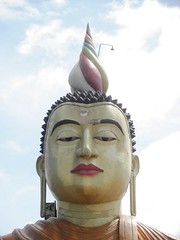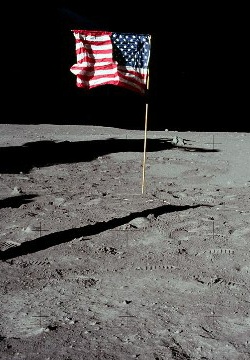Look at a map and you will notice West Bengal is a rather oddly-shaped state. It basically consists of the megacity of Kolkata, a swathe of forest and impoverished villages on the edge of the Ganges delta, and an absurdly narrow spindle that leads north to a stretch of the Himalayas the locals call Gorkhaland. The Gorkhas, a Nepali ethnic group with weird historical ties to Rajasthan (whence their celebrated martial inclinations) have basically nothing to do with the Bengalis except that they live in the same state, and most of them would like to see that haphazard arrangement come to an end and have their own little mountain state called Gorkhaland.
Aside from the obvious physical differences --Gorkhas have a "Himalayan" appearance while the Bengalis are clearly Indo-Aryan-- the great divide between the two groups can be summed up like this: Gorkha youths wear headphones. As I began the long, winding ride up into the mountains, the jeep I was in carried myself, about seven Gorkhas, and a Bengali man. The Bengali did as Indians are wont to do and turned his mobile phone to full volume, treating the entire jeep and any nearby wildlife to the ubiquitous Hindi pop music which calls to mind hearing a cat being tortured over a walkie-talkie while lying head-swimmingly drunk outside of an Ibiza nightclub. The Gorkhas all glared at the man, and I joined in, as if to say "What on God's green Earth makes you think anyone else wants to listen to your personal choice of music, however terrible it may be?" The man, confused and sheepish, turned off his phone. Its tinny, shrill ululations were replaced by the soft and soothing strings and mild percussion of Nepali mountain love songs at (for India) a radically neutral volume, and the driver looked around the jeep to ensure his choice of radio station had the support of a consensus. It was fucking remarkable, yo. The Gorkhas want to have their own state so that they can administer the unique needs of developing a mountain area that has been rather incompetently controlled from the sweltering plains, and it seems they also just want to be left alone to do things their own way, thank you very much.
I was heading up to the famous mountain town of Darjeeling, known for its mesemerizing Himalayan views, rich cultural heritage, and history as one of British India's premier snooty retreats. There isn't much of the snooty British atmosphere left (not that I mind). Darjeeling is now the premier chaotic hill station retreat for thousands upon thousands of moneyed Bengalis who want to be anywhere but Kolkata during the summer. I got my first taste of Himalayan roads as the highway zigzagged relentlessly up the insanely steep ridges and eventually snaked along the mountaintops through a series of precariously-perched ridgetop towns. For most of its route, the highway winds along with the hilariously narrow tracks of the Darjeeling Toy Train, a bizarrely popular little train service that still runs on steam power and takes people up the hills at half the speed of any automobile. People use the train tracks as a pedestrian sidewalk, because the train is so slow that if it does come by in the highlands, it is quite possible to walk alongside the pathetic chugging and whistling contraption and shake hands with all its passengers before lazily walking on ahead of the train to pick up any errant goats one may have left lounging on the relative safety of the track.
Finally the jeep pulled into "lower" Darjeeling, the filthy, overbuilt ridge-side where hundreds of hotels cater to the holiday droves. I say "lower" Darjeeling because this part of town is at a paltry elevation of 2050 meters or so. By comparison, the famously elevated city of Denver, CO is at 1600 meters. Fortunately, most of the holiday-makers are either subconsciously addicted to the grime and noise of home or are completely disinclined to walk a long distance uphill, leaving the very top of the ridge a fairly nice refuge of quiet foreign backpackers and local Gorkha townspeople. This soon became my first taste of Himalayan roads on foot, and as I told the hotel manager after I finally found his establishment, "I took one bitch of a wrong turn." I looked uphill to where the ridge topped several hundred meters above me and began the torturous labyrinthine zigzag upwards. Somewhere along the way I wrongly estimated my horizontal position and ended up hauling myself and my luggage for over an hour along a road all the way out past the edge of town and to the pinnacle of the mountain, where I figured it would finally switch back to the ridgetop road, and was denied access to military territory, was informed that I had come by the most painful possible route, and that I should walk about half an hour downhill on this ridgetop road to get where I wanted to be.
Along the way down I ran into a foreign tourist who was looking for a public tea plantation. Darjeeling, as you may know, is renowned for producing some of the world's finest tea. I found many an excuse (usually fatigue from endlessly tromping up and down the ridge) to sit in cafes and sip on some motherfucking fantastic tea at deliciously rural prices. Tea, tea, tea. Teeeeaaaaaaa. Anyways, this tourist was schlepping up the hill on the logic that tea grows at high elevations. "Oh it does," I told him. "the high elevations you're looking for are... down there..." I said, sweeping my hand towards the precipitous slopes of clustered green bushes far below us. It bears repeating that the Himalayas are very, very tall.
They call Darjeeling's perch, which reaches almost 2500 meters, a "hill". And you can't blame them, because when the haze clears you can see across the "hills" to what are undoubtedly some genuine motherfucking mountains. Some 70 kilometers away, yet still seeming to tower directly over Darjeeling town is the enormous Kangchenjunga, which soars to an utterly preposterous 8600 meters, making it the third-tallest mountain in the entire world. As I stood on the ridge above Darjeeling proper, I could make out the town at its 2000-meter height. Above that was several thousand meters of solid gray clouds and haze obscuring the hills and mountains for miles around, and then finally the upper portion of Kangchenjunga defiantly rising several thousand meters above that, almost like an enormous rock-strewn iceberg floating upon the clouds. I don't know any other way to describe it: the mountain is huge.
From Darjeeling I wandered around the nearby "hilltops" for days, continually frustrated by being engulfed in clouds everyday by 11am and forcing myself to rise at 4. The mountain panoramas mostly eluded me, but in my explorations I passed by many beautiful Nepali and Tibetan Buddhist monasteries and other temples. While I have tired of Hindu temples for the forseeable future, the breathtaking settings of the colorful Buddhist gompas among the evergreen trees on the edge of cliffs looking out to the sacred peaks of the Himalayas is not something to be missed. There are multicolored prayer flags at every turn, and one hill is capped with a bewildering thicket of such flags, hanging in the thousands between the dense trees where the Buddhists and Hindus share the holy grove and sort of share the deities. I also made a trip to the Himalayan Zoo, a fascinating and well-kept place specializing in East Himalayan fauna where you can look at the cuddly, raccoon-like red pandas strutting about in their native habitat and watch as various species of incredibly elusive mountain cats sit around and take naps. The zoo is about a 45-minute walk downhill. Walking back uphill demands a stop for tea.
Finally, however, the weather got worse and worse and I became unable to get anything accomplished as I had comprehensively visited the area's gorgeous monasteries and all that remained were various epic mountain views which I could tell were never going to present themselves. I had other places to be and slowly resigned myself to returning to the lowlands and confronting the barrage of honking rickshaws, shitting cows, and the thousand other swirling elements of Indian urban chaos yet again. Darjeeling may not have any water to spare, but it has sewers. It will be missed.
Apr 8, 2010
Subscribe to:
Post Comments (Atom)









No comments:
Post a Comment
Commenting Rules:
1)No spam, viruses, porn etc.
2)DO NOT POST GF-B's REAL NAME
3)Remember this is a public website, don't provide sensitive info about yourself in the internet!